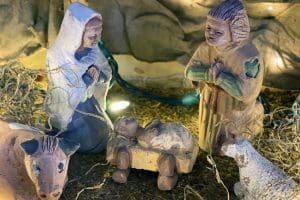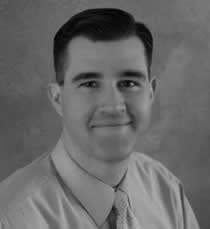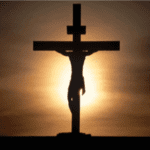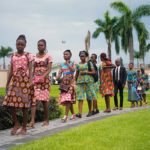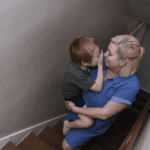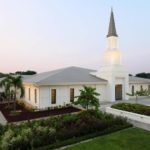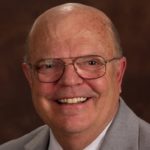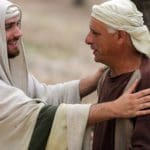
Robert A. Boyd
The Art of Photography
By Steevun Lemon
To see more of Bob’s work go to: www.robertaboyd.com or www.reparteegallery.com/m-442-bob-boyd.aspx
If a good journalistis supposed to be unbiased, then I must confesswhen it comes to Robert A. Boyd I am not a good journalist. I have known Bob for almost a decade and have been a rabidly biased fan from the moment he laid that first stack of photographs on my desk.
Perhaps even more impressive than Bob’s photographs, however, is the man behind the camera. Several years ago, I called Bob and asked if he could make time to take pictures of my wife’s parents. My father-in-law was ill and we felt an urgency we might not otherwise have felt. Bob rearranged his entire schedule and came over that very night. My father-in-law passed away the following week and those pictures have become a cherished family treasure that captured a love that spanned more than forty years. There is not a time that I look at them that I am not reminded of the sincere love and compassion that Bob showed toward us.
When I called Bob to ask if he would be available for an interview he was characteristically modest. As we sat and looked at his inspiring photographs I was reminded of something my mother said years ago. She said, “The creation truly reveals the creator.” That is certainly true with Bob.
How did you get involved in photography?
In 1989, I walked into my first darkroom. From the moment I watched an image come out of the tray I was hooked. A little later that year I had some friends who asked if I would do their wedding pictures. The more weddings I did the more people asked. It just took off from there.
How many weddings have you done?
I haven’t done weddings for a long time, but I would guess I have done more than a thousand weddings. I always wanted to do something different. I loved creating things that were filled with emotion. If I showed a mom a bridal picture and she cried, I felt like I had succeeded. It was a visible way of knowing that I had captured the personality of her daughter in a way that truly touched her. That was the part of the work that kept me going.
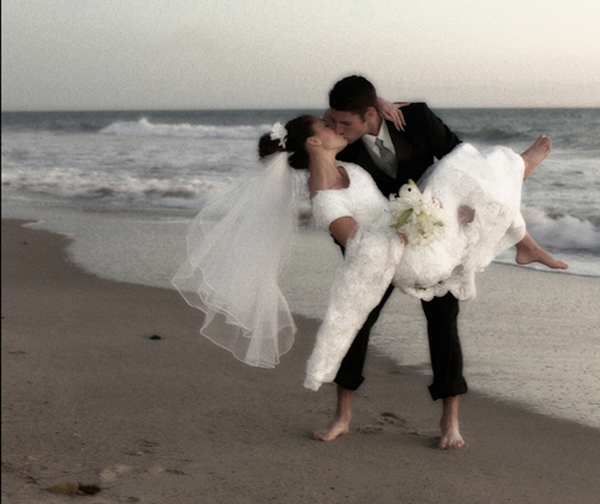
What was your first camera?
A Canon A-1 Pro. I moved to medium format for weddings, but didn’t make the jump to digital until 2001. In the beginning, digital images looked fake. So I spent hours in post-production using Photoshop to match the digital images to what I was getting from the medium format. As resolution increased on the digital side I realized there was a lot more than I could do digitally than I could in the darkroom.
I had studied Ansel Adams and enjoyed manipulating the negatives based on tonal ranges, values in the grayscale, and other effects. I had my own darkroom, but I found my “digital darkroom” gave me even greater flexibility and allowed me to take the images from just what I shot to something much more. They became, for me, a work of art and my customers agreed. At that point they universally preferred the digital images to the film and I never looked back.
When did you first shoot a temple?
The first time I shot just the temple was December of 2000. I had a digital Coolpix point-and-shoot that was a whopping 3.3 megapixels. It was Christmas time and I took a picture of the Salt Lake Temple. When I showed it to friends I was surprised that they wanted to buy it. In fact, we still sell it today.
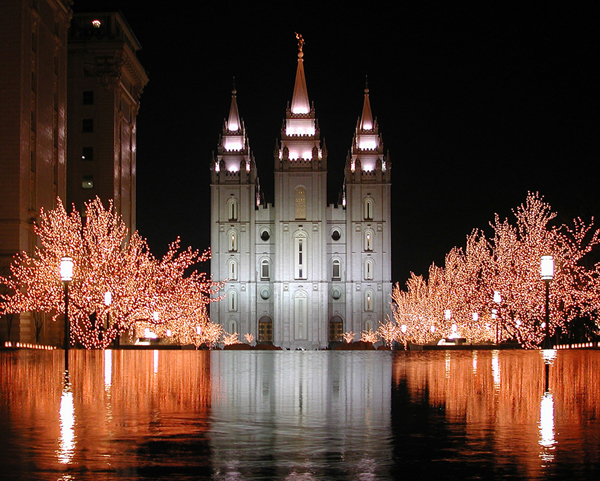
As the bridal business was growing I began receiving calls to do weddings that were out-of-state, in places like Washington D.C. or Hawaii. My mother-in-law pulled me aside and said, “Why aren’t you taking some pictures of the temples? With all that you can do I would bet you could create some wonderful pictures.”
The minute I started focusing on taking pictures of the temple amazing things started to happen. I found beautiful scenes, sunsets, perfect lighting and I knew that it was beyond me what was happening. I was being blessed with some great opportunities to take some beautiful pictures.
What do you do to prepare?
The most important thing is to find a peace that comes from realizing you are not in charge. Early on I would be panicked when things didn’t work out the way I wanted. I would be stuck in traffic and worried about getting there for the sunset or the sunrise. Even when I missed what I thought I wanted, I would inevitably find something better. Perhaps a moonrise or a beautiful sky that I would have missed had I arrived when I wanted to. Learning to trust the Lord is the best preparation for not just shooting the temple, but for anything in life.
Is there an image that has particularly special meaning to you?
I created an image called, Amaranthine that proved a turning point for me. Amaranthine is a shade of red that comes from the Amaranthine flower and means, “eternally beautiful and everlasting.” When I looked at the temple that day I could see beyond just what was there.
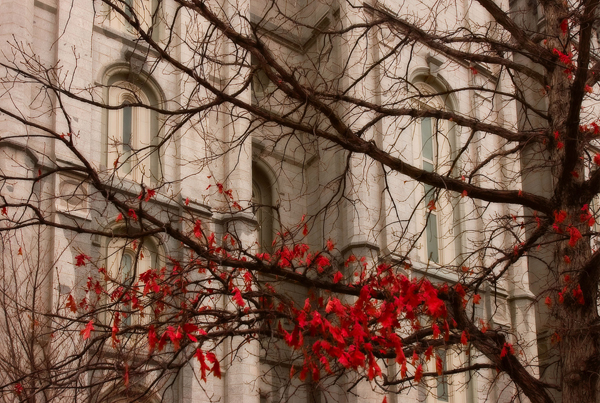
The temples have so much intricacy and architectural detail that speaks volumes of the sacrifice and love the early saints had for the temple. I also love trees and particularly oak trees. To me they represent a quiet strength and stalwartness.
When I looked at the shot in the camera, it wasn’t much to look at, but I knew right then what it would be with a little work. I had learned years earlier, that truly great photographers “get the shot” as much in the darkroom as in the camera.
I think sometimes we are like that image in the camera. We may not know who we really are or what we can become, but the Lord does. He sees all of our potential and if we are willing He will make us far greater than we ever could have done on our own.
I took the image back to my digital darkroom and when it was finished I was so excited. I knew this was more than just a photograph. I felt like it was a work of artin every sense of the word and certainly beyond me to have created it.
What is the best part of photographing temples?
All of it. I think perhaps being on the temple grounds surrounded with so much beauty may be my favorite part. Amazing gardeners have crafted heavenly scenes from flowers and planted the right trees in the right places so that they blossom at just the right time.
In fact, I just finished an image of the Salt Lake Temple called Eden.
The grounds were incredible. I just kept thinking to myself, “If man can build something this beautiful, can you imagine what the Lord can do?” I can’t wait to see the temples in heaven.
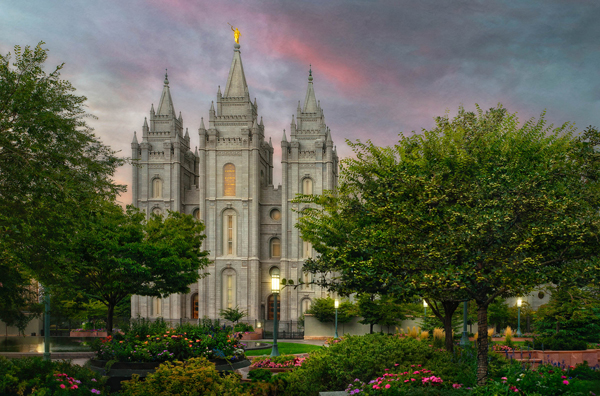
Do you have a favorite temple?
I don’t know if I would say I have a favorite.
Each temple has its own distinct personality and feeling. I love the connection to the past I get from the pioneer temples like Salt Lake, Manti, Logan, and St. George. But I also love the beautiful architecture in more modern temples like Newport and Boston.
I feel a closeness to the Mount Timpanogos temple because that is the temple district I live in and so I get to visit that temple more than any other. When you visit a temple often you get to see it at times when the patron who only comes for a wedding does not.
For example, I remember leaving work one night and it had been raining. The clouds were clearing fast and the moon was enormous. The clouds were at the right height to reflect the moonlight back into the sky and so even though the sun had been down for several hours the sky was still this amazing shade of blue. I ran back into the office and grabbed my camera and headed to the temple. I took about twenty shots from different angles, all in the space of five minutes. At that point the clouds had passed and it was all gone. I will never forget that.
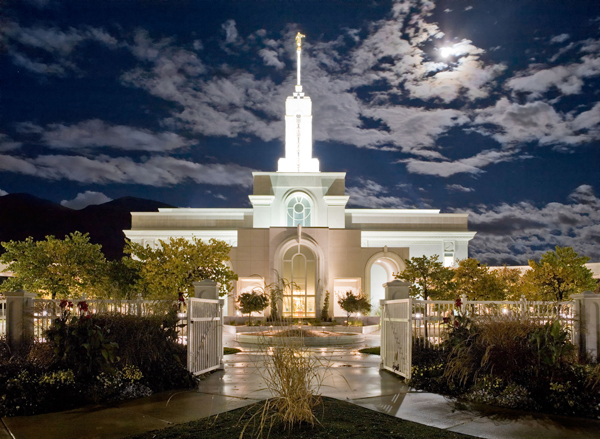
I know you lived in Nauvoo, do you have a favorite image from there?
There is one image that many people like called Looking West. I had to be in a crane to catch the shot. The sunset was reflecting off the Mississippi and there was a glow from the windows that was really spectacular. That picture has really come to signify Nauvoo to me.
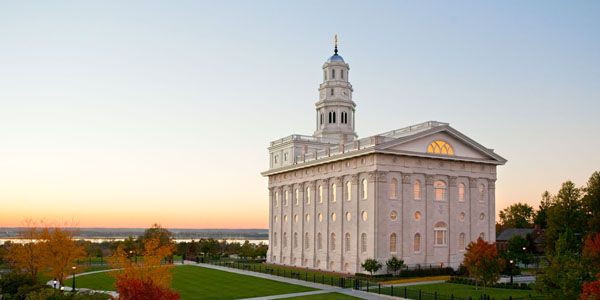
My favorite image, however, is one that is more artistic and so not as many people see it or like it as well. The sky had this amazing glow and the clouds were like a painting. I wanted to capture the beauty of the temple and the beauty of God’s creation. That image is probably my favorite of Nauvoo. There is also one with an apple tree that I really like.
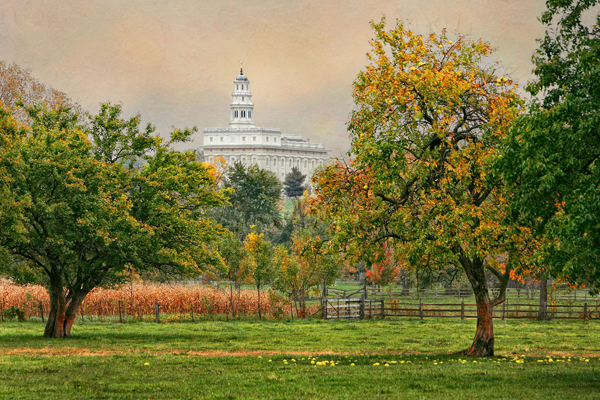
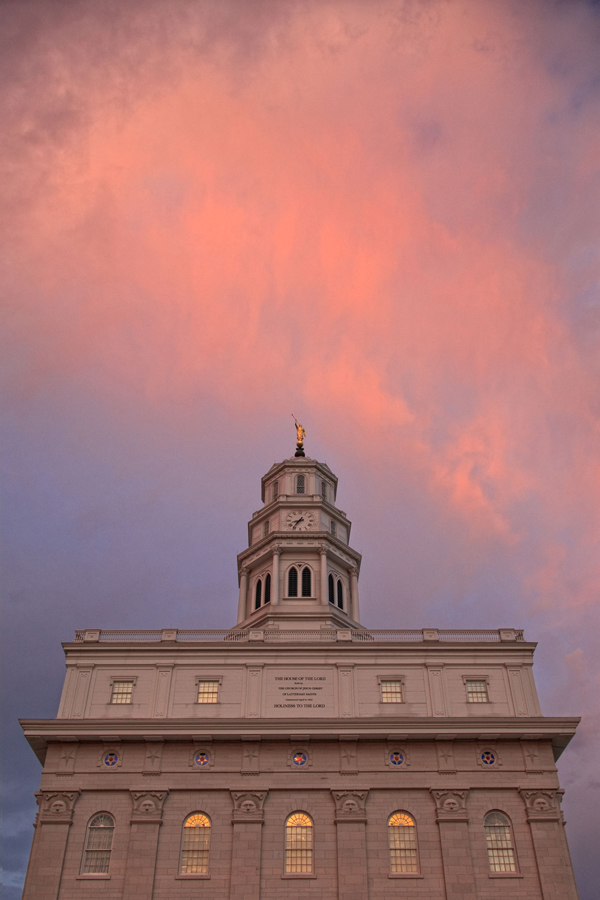
One of my favorite images is a tree in St. George, tell me about that?
When we see images of the St. George temple we often see if from far away because the radiant white of the temple against the red rock is so dramatic. But that means that we don’t often see the architectural details or the grounds of the St. George temple. I wanted to focus on that and the amazing details in the structure.
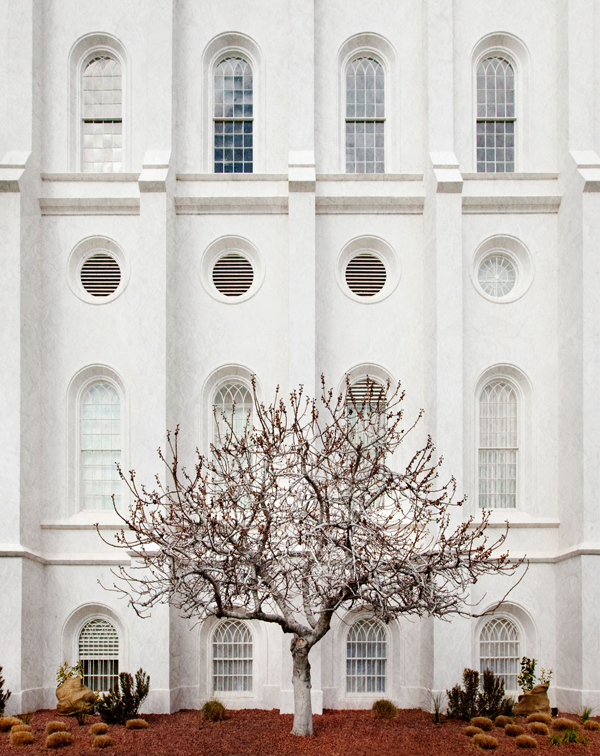
Do you have a favorite image of temple architecture?
Nauvoo and Salt Lake have some of the most dramatic architectural details. The stone in Nauvoo is cut with grooves in the surface as it was when the temple was originally built. I caught it at sunrise when the light was coming across the stone and highlighting the Moonstones and the texture in the walls and it just spoke to me.
In building temples we give to the Lord our very best. This image reminded me that we are just people doing the best we can and sometimes our best, with the Lord’s blessing, is truly remarkable. Up close it looks flawed, but if you stand back things appear almost perfect.
Sometimes we compare ourselves with all of our flaws that are so obvious to us, against someone else who from afar looks almost perfect. But in truth we are all flawed and struggling to do our best and with the Lord our best is enough. He accepts us and makes up the difference.

With Salt Lake Temple there is a piece called Sempiternal which shows the temple plaque that reads “Holiness to the Lord.” Elder Holland spoke of the man who carved the plaquein the April 2000 General Conference. He said:
“John R. Moyle lived in Alpine, Utah, about 22 miles as the crow flies to the Salt Lake Temple, where he was the chief superintendent of masonry during its construction. To make certain he was always at work by 8 o’clock, Brother Moyle would start walking about 2 a.m. on Monday mornings. He would finish his work week at 5 p.m. on Friday and then start the walk home, arriving there shortly before midnight. Each week he would repeat that schedule for the entire time he served on the construction of the temple.
“Once when he was home on the weekend, one of his cows bolted during milking and kicked Brother Moyle in the leg, shattering the bone just below the knee. With no better medical help than they had in such rural circumstances, his family and friends took a door off the hinges and strapped him onto that makeshift operating table. They then took the bucksaw they had been using to cut branches from a nearby tree and amputated his leg just a few inches below the knee. When against all medical likelihood the leg finally started to heal, Brother Moyle took a piece of wood and carved an artificial leg. First he walked in the house. Then he walked around the yard. Finally he ventured out about his property. When he felt he could stand the pain, he strapped on his leg, walked the 22 miles to the Salt Lake Temple, climbed the scaffolding, and with a chisel in his hand hammered out the declaration “Holiness to the Lord.”
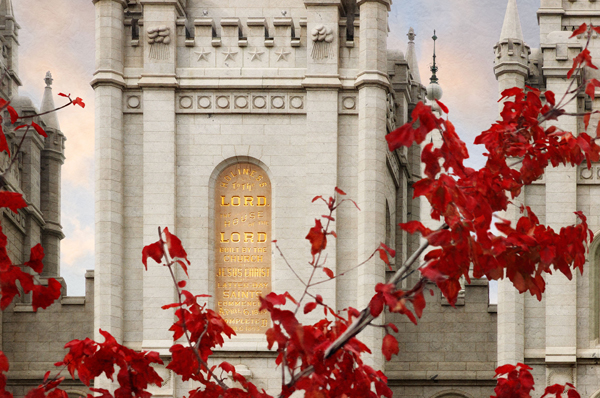
Thousands of people pass that plaque each day and don’t think for a moment about who carved it or what Brother Moyle gave for the gospel. I wanted to capture that beautiful plaque that serves as one of the hundreds of silent sermons reminding us today that no sacrifice we make for the Lord is too great.
How many temples have you photographed?
I have created images for almost 60 temples so far.
Have you shot other Church locations?
While I was living in Nauvoo I had the opportunity to go to Adam-Ondi-Ahman. The feeling there is as sacred as any temple grounds I have stood on. The shot I took was using infrared spectrum and I loved the peacefulness that came through.
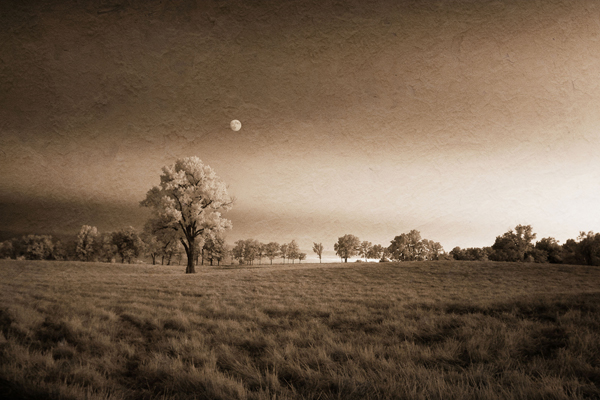
And then I had the chance to go to the Sacred Grove and capture the beauty and importance of that place. I have often thought that each one of us in the Church is forever changed by what happened there. As we sit in church we often forget that without the First Vision there is no Church.
So in a very real way we are each where we are at this very moment because of what happened in that grove of trees.
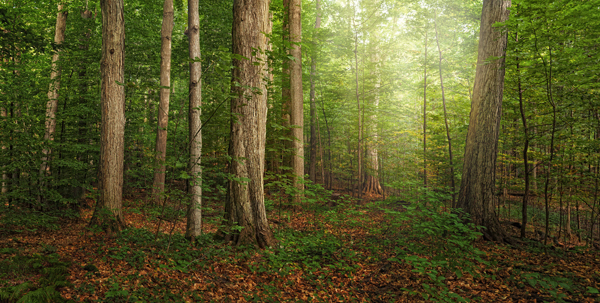
Is there anything you are dying to shoot?
The Orlando temple in December would be nice. Perhaps a family trip (said with wink and a smile).
After you are gone, what do you want people to remember of you when they look at your work?
I hope that they’ll look at those images and say, “This man loved the Church, loved the temple, and loved the Lord.
To see more of Bob’s work go to:
www.robertaboyd.com – or – www.reparteegallery.com/m-442-bob-boyd.aspx
When Steevun is not writing about art he has a blog about the adventure of raising a family at www.returntothefamily.blogspot.com/
Or “like” us atwww.facebook.com/PictureOfChrist -and- www.facebook.com/robertaboydfineart








